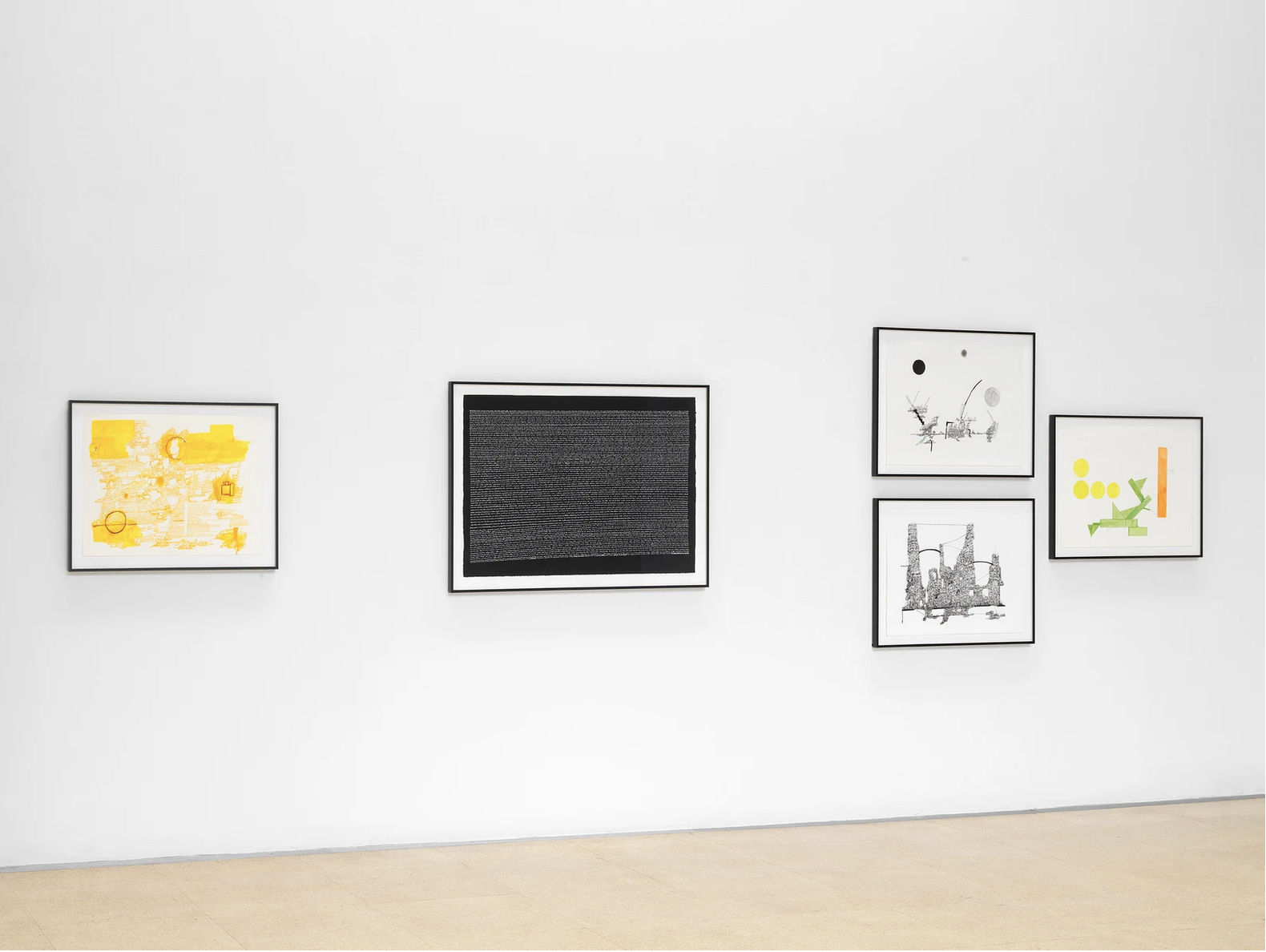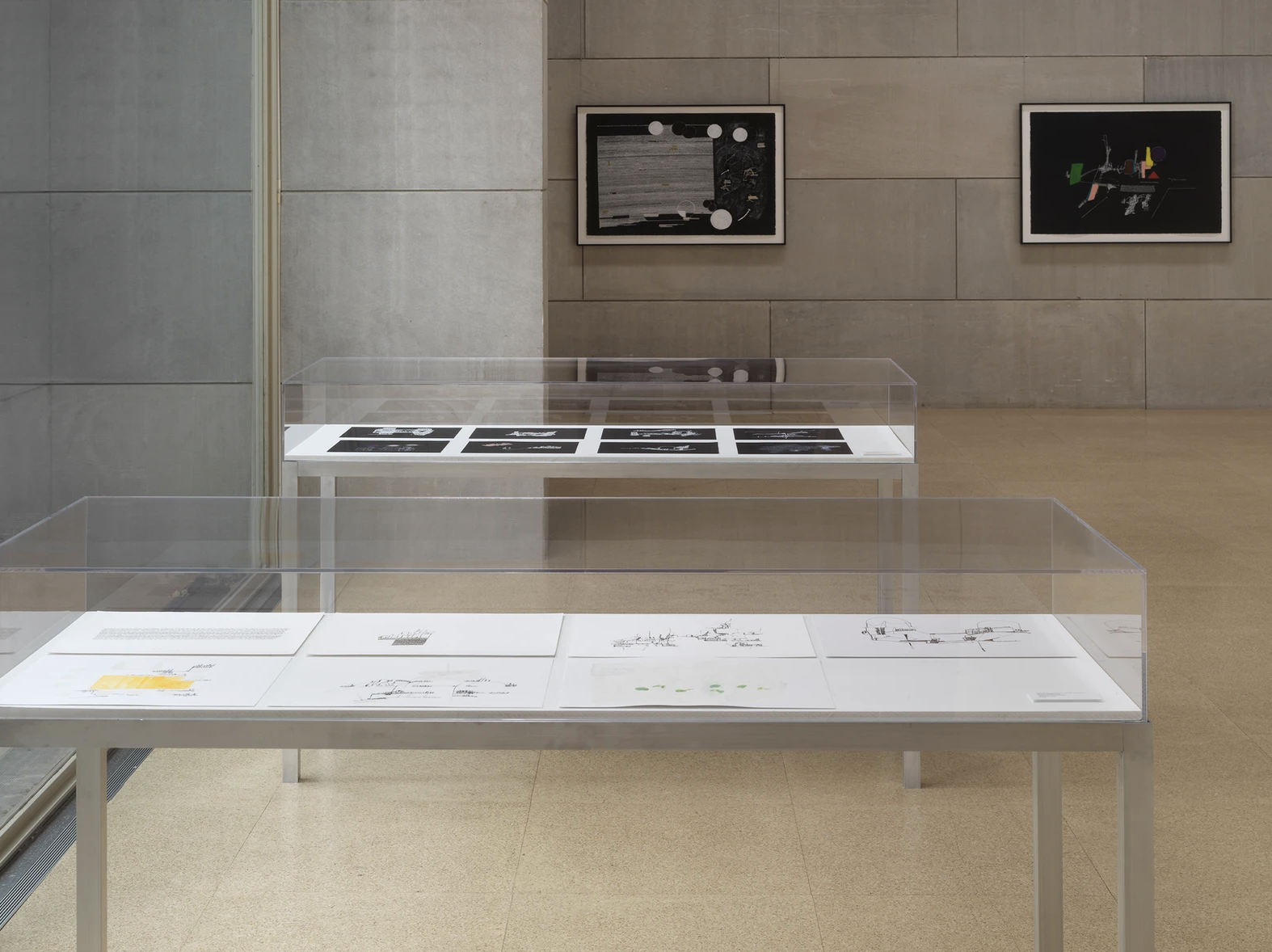
c/o Dario Lasagni
“The Dreams of Sentences,” a new exhibition in the Ezra and Cecile Zilkha Gallery showcasing work by artist Renee Gladman, reconceptualizes the relationship between writing and visual art. The exhibition went up on Tuesday, Sept. 6, with a formal opening held on Tuesday, Sept. 13.
“A writer and artist preoccupied with crossings, thresholds, and geographies as they play out at the intersections of poetry, prose, drawing, and architecture,” reads the display in the Zilkha Gallery, describing Gladman.
It was the word “preoccupied” that stayed with me as I viewed the work on display, “The Dreams of Sentences.” It seemed like it must describe the state of the artist, absorbed by recording every thought.
At the exhibition’s opening, a crowd of Wesleyan students and community members perused the artwork before Associate Director of Visual Arts Benjamin Chaffee, curator of the exhibition, introduced Gladman. Chaffee highlighted Gladman as a local artist who added significance to the Zilkha Gallery as the site of her first solo exhibition. The University had considered including Gladman’s work in an exhibition last fall which featured work from a number of artists, but instead decided to curate this solo show as part of the context-building which Chaffee considers vital to the work of a curator. But, Chaffee noted, Gladman’s work doesn’t need any outside context to be impactful.
“The [only] context it needs is itself,” Chaffee said.
One of the elements that most defines Gladman’s work is the way that she relates written language and visual art, the latter of which she describes as “language with its skin pulled back.”
The title alludes to the fact that the exhibition includes both visual and written work, referencing previously published books with similarly evocative names, such as “One Long Black Sentence” and “Plans for Sentences.” Even the cover of the exhibition handout, which would typically feature a picture of the exhibition, is instead a sample of Gladman’s writing. The chosen piece synthesizes how Gladman relates language and visual art, and finds in both a means for conceptualizing and the other.
“I spent a long time looking into each of the acts of how I’d been in the world, how I’d conveyed that I’d been there” Gladman wrote in a 2018 piece in e-flux Journal, identifying the important actions of seeing, reading, writing, and drawing in her life.
While there might be some measure of interchange between Gladman’s art and writing, to assign Gladman’s art the simple cliché that a picture is worth a thousand words is to miss the point. She does not draw a scene within which a narrative is clear and familiar. Rather, she breaks her stories down into their most fundamental components—lines, shapes, color, symbols—that are narrative at its most fragmented. It seems that Gladman is mapping the formation of ideas and process of thinking: how we ourselves make a craft of language and art to place ourselves into time and space.
Chaffee considers the connection Gladman makes between art and writing to be a grounded, fresh take on drawing, the kind he is always looking to represent at the Zilkha Gallery. For Chaffee, representing this spatially is integral to the exhibition. Chaffee’s focus is on balancing the written aspects of Gladman’s work with the visual ones, while avoiding any hierarchy between them. He hopes the audience would see the artwork rather than simply read it. Chaffee distinguishes between the different ways of absorbing art, bringing the audience’s gaze down to the excerpts from Gladman’s books and journals flat on display, and then up to the art on the walls as they move through the exhibition. In Chaffee’s goal of bringing context to the work, Gladman’s journals are perhaps the most crucial, illuminating her process, including descriptions of her day identifying exactly when she is moved to create.
Gladman’s visual works fall into the categories of “Cities,” “Scores and Maths,” “Moons and the Planetary,” and “Charts,” as listed on her website. Each emphasizes a certain quality of her work, from words and lines in the form of a skyline, demonstrating the architectural nature of language and thought, to colorful circles on black paper representing the ways in which language places us into space and conceptualizes existence.
Perhaps most intriguing to me were the pieces that would be considered “Scores and Maths,” which are concerned with angles, directions, and scattered symbols of dy/dx whose placement on the canvas were as erratic as they appear in my own calculus homework, trailing off to the side as I think through the act of writing, ideas unorganized but productive on my page.

c/o Dario Lasagni
In Gladman’s opening speech, she emphasized wanting her audience to consider the title of her exhibition as they viewed her work. What is the dream of a sentence? Perhaps we should consider the word “dreams” in the frame of our own unconsciousness, where our thoughts exist in their most unpolished state, translatable only as abstractly as Gladman’s works of art, not yet in existence but still affirming our own.
In recognition of the interdisciplinary nature of Gladman’s craft, “The Dreams of Sentences” exhibition is co-sponsored by Writing at Wesleyan, and Gladman is scheduled to give a reading Tuesday, Sept. 27, at the Zilkha Gallery. The exhibition will run until Oct. 16. More information can be found online on the CFA website or on Gladman’s personal website.
Sadie Gray can be reached at sgray01@wesleyan.edu.
Comments are closed